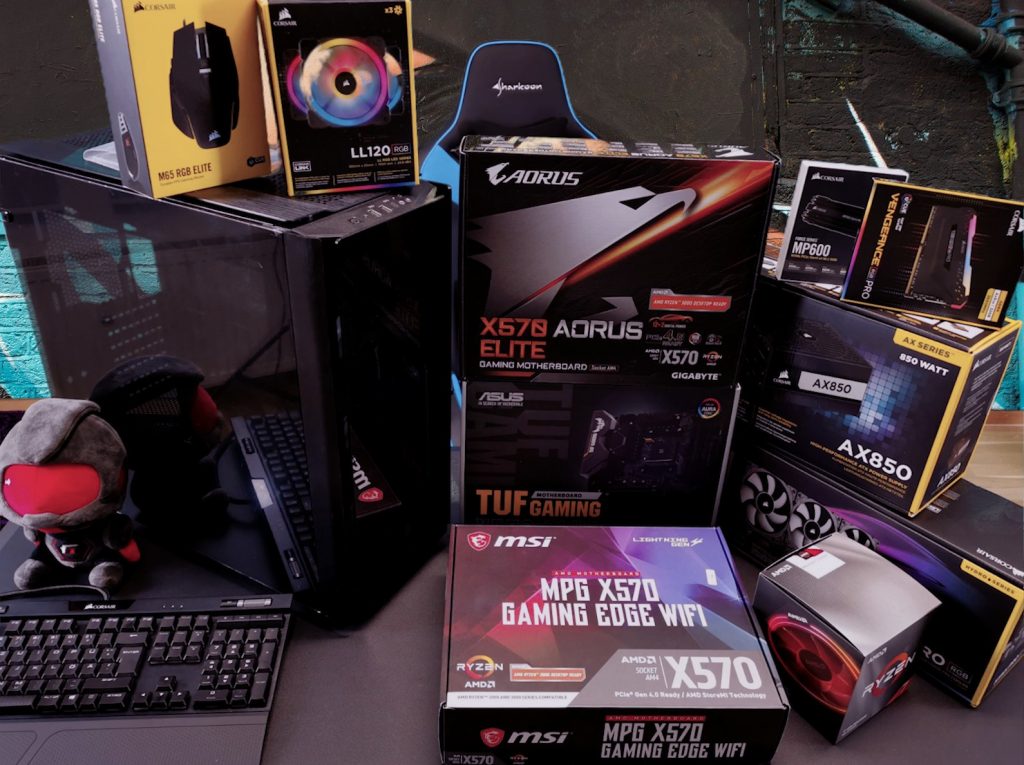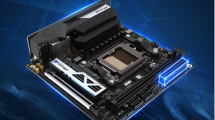Concusion
Even though some PR departments (and some media) may think that certain details are sensational, you can still safely rule out any thermal problems as long as the boards are in power consumption ranges for the CPU that the Ryzen 7 3700X can reach as a normal Central European without sinister murder intentions. You really have to be honest in the end and put the price and the target group in relation to the result. And that’s exactly where individual boards don’t cool worse than others, but some cool better than the rest, because nowhere is anything broken. So it’s always a question of perspective and marketing that is paid to produce arguments.
And you won’t get more than 130 watts out of the Ryzen 7 3700X, as long as you don’t lever out all mechanisms in the BIOS and try extreme OC with supposed monster coolers and brutal voltage increase. Then, with a bit of good will, you can get everything sorted out, even the throttling. But what is really close to my heart is the fact that a reviewer does not forget his own responsibility towards the consumers in all the understandable hunting of quotas and ranges. For it is precisely these cases with a different cooling configuration and without any reference to reality that lead to uncertainty that benefits no one.
I think it makes much more sense for me as a customer to know that nothing burns up, as long as I stick to the very broad possibilities of the OC, use a CPU that is also reasonable in price for the board and also find out whether my headset performs at least to some extent at which plug – or not. In addition, a missing 20-pin motherboard connector for e.g. the USB 3.1 cable of the front panel is much more annoying if you have to buy something else instead. The potential chance of a fooling around with improper overclocking seems quite silly.
If you are looking for gaming benchmarks, you will intentionally not find what you are looking for here. All boards perform absolutely identical within possible measuring tolerances, which also applies to the maximum possible clock rates. Those who overclock manually will not notice the different efficiency of the power supply, because the differences are rather marginal and also not within the limits of reproducible results. Only the temperatures are different and the slight voltage regulator losses then affect the EPS. Only those who use PBO for overclocking alone and maintain the strict limitation of the wattage to 90 watts will perhaps sporadically have 25 MHz less, but this is relativized when CPU cooling comes into play. You can lose a lot more if the CPU gets too hot.
Asus TUF Gaming X570-Plus
So far there is no new BIOS for my (reproducible) technical problem, only the workaround with the non-UEFI graphics card shown in the video. But in the end this is not a solution, just a plaster. If you leave these problems aside, the Asus TUF Gaming X570-Plus doesn’t look bad when it comes to cooling. However, I don’t like the audio solution on this board very much, both high-impedance headphones will have a hard time as well as connected amplifiers, because the output level at the jack on the back side is the weakest of all three boards.
The SSD-Performace, on the other hand, is very good and the number and design of the connectors is also convincing. Only the chipset fan is annoying and suboptimally placed. This is a point that could (and should) certainly be discussed. The small diameter and the placement directly below the graphics card are definitely worthy of criticism. In the sum of all characteristics this board is however good to very good, concerning this price class, even if you may miss Bluetooth and have to ponder about the BIOS.
Gigabyte X570 Aorus Elite
Conspicuously unobtrusive. That doesn’t have to be a lack, on the contrary. Gigabyte has been calculated very hard and a very balanced board without real mistakes or disadvantages has been created. The whole thing is deliberately unagitated and there are no important features missing apart from the diagnostic LED. It’s the standard Golf among the X570 motherboards. A little boring perhaps, ok, reliable for that and in the evening of a long day still somehow respectable.
If you attach more importance to connectivity, you have to retrofit a WLAN stick or a plug-in card, depending on your wishes or requirements. The rest is complete. By the way, the many RGB headers also light up. In my opinion, the board doesn’t get enough attention, especially since it’s definitely not a bad product. Unfortunately it gets lost in the mass a bit, although you didn’t do anything wrong with Gigabyte. Check.
MSI MPG X570 Gaming Edge WIFI
I can’t understand all the media excitement about this board. The voltage regulators are not world champions, but they do what they have to do. Thermally everything still works fine, so you should really stay on the ground. These savings, which don’t interrupt the function in normal use, give the financial manager more leeway for additional features. And so it comes as the only board of this price class already with integrated WLAN module (Intel) and Bluetooth 4.2 to the customer.
So the connectivity fanatic is well served here. Apart from that there are no further highs and lows, even if the board still touches it best haptically, which is probably also due to the relatively high weight. Ok, I missed the 20-pin for my Type-C front panel.
Bottom Line
It’s the typical 200 Euro class where you get a lot, but not everything and some things not as complete as you might like. Nevertheless these boards are better than their reputation, even if there are still some questions left unanswered. Of course you get something like that better, but it’s also much more expensive. From that point of view you can leave it that way, because it’s also much more modest. And yet there are things that bother me, because they don’t cost much and would have been easier to solve.
With audio, diet is the order of the day everywhere, unfortunately. And instead of removing the heat sinks and mocking yourself about various hotspots under violently constructed overloads, the protagonists of the cultivated bashing would have rather put on a headset. This is where the true reserves lie that the manufacturers have been deliberately ignoring for years. Or you could have checked to see if all the headers on the motherboard that modern cases demand are really there. But that doesn’t generate clicks.
The other performance looks really ok. By the way, this also applies to the Corsair components used, from the case and the fully modular power supply, to the AiO compact water cooling and the fans, to the RAM and the SSD. Especially with the RAM, the interaction of the motherboard and the full configuration of the DDR4 3600 was an amazing progress compared to the previous version of the CPU. Everything is compatible right away, with the nimble SSD anyway.
In the end you almost don’t want to take the computer apart again, because I didn’t find any real flaws, on the contrary. That’s why we’ll certainly encounter this PC from time to time in the future, because I’ll use it at the photo and website workstation. Then, however, with an adapted graphics card, but that’s another topic again. Then it’s more about monitors, input devices and ergonomics. Because with iCue you can switch off the light completely if you need to. So Long!

































Kommentieren